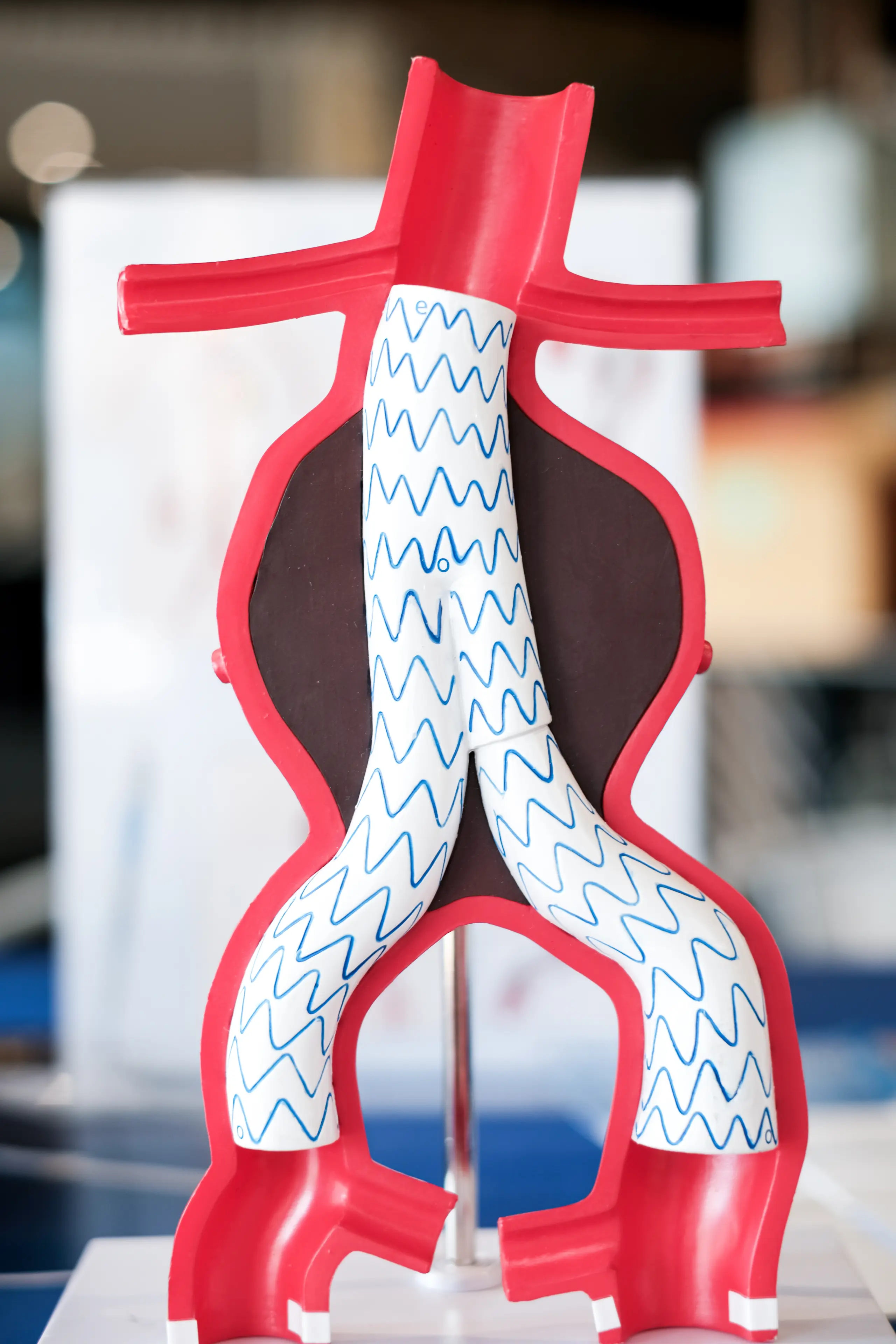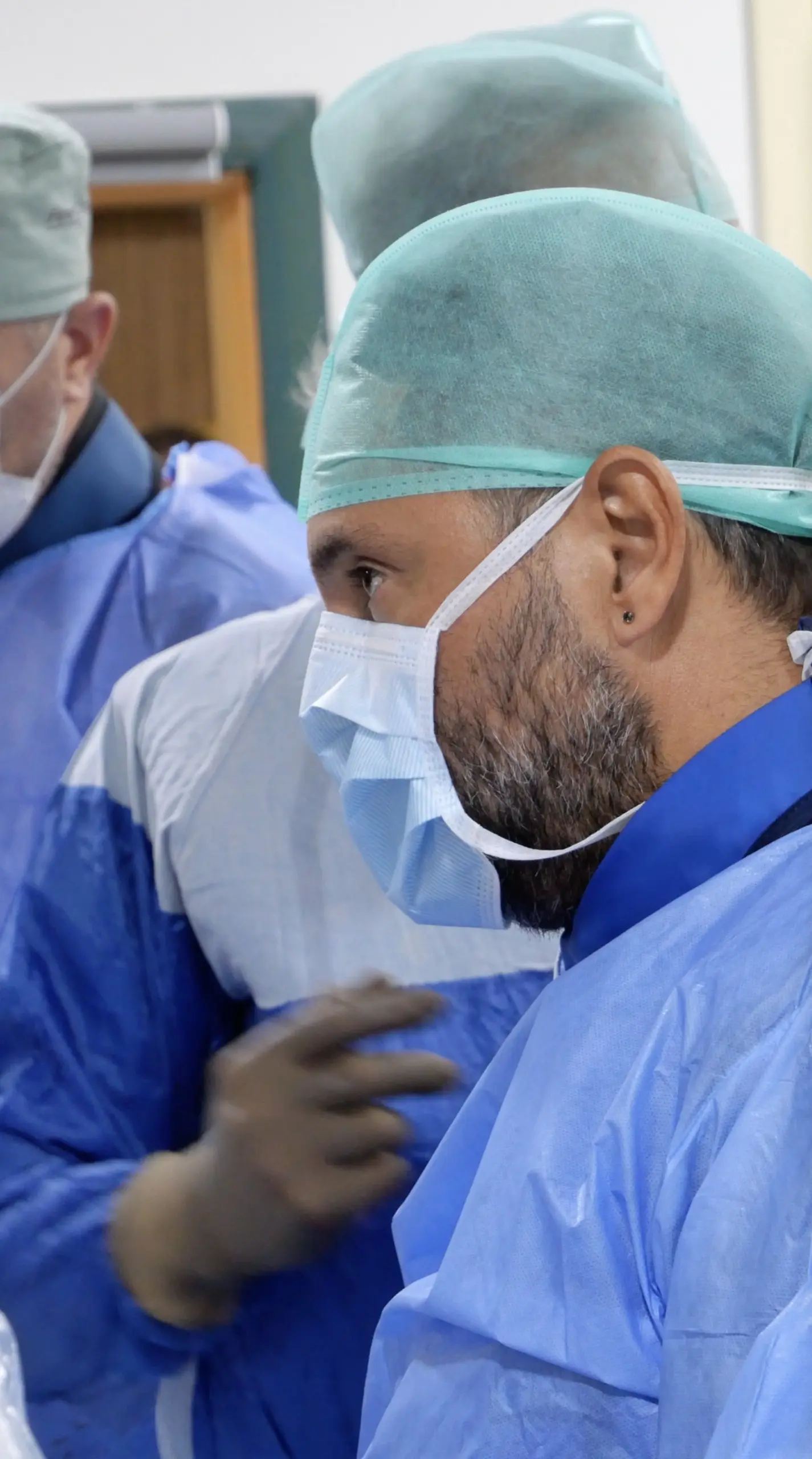Endovascular Interventions
Non-surgical vascular treatments do not require intensive care admission after the procedure.
Patients are usually discharged on the first day and can return to their normal daily activities.
The procedure offers a high level of safety and patient comfort.

Endovascular Interventions
Abdominal Aortic Aneurysm (AAA)
- The aorta is the main artery that carries blood from the heart. After supplying blood to the head and arms, it travels down to the abdominal region, giving rise to arteries that nourish the kidneys and internal organs, before splitting into two to supply the legs.
- The aorta may balloon (expand) primarily due to high blood pressure, as well as contributing factors such as smoking, atherosclerosis, and genetics. The main risk associated with an enlarged aorta is rupture—similar to an overinflated balloon bursting.
- Early diagnosis and, when necessary, surgical treatment can be life-saving in preventing aortic rupture.
- The simplest method to detect aortic enlargement is through an abdominal ultrasound. If an enlargement is found on ultrasound, a contrast-enhanced CT scan should be performed to confirm the diagnosis.
- If the diameter of the aneurysm exceeds a certain threshold, surgery is required.
Surgery
- In traditional aortic aneurysm surgery, the enlarged portion of the aorta is completely removed and replaced with a synthetic graft. To access the aorta, a long surgical incision is made in the abdomen. After the surgery, a stay in the intensive care unit is required, and you will need to refrain from eating or drinking for 2–3 days.
- If the aneurysm begins below the renal arteries and is anatomically suitable, the surgery can be performed using a minimally invasive (endovascular) approach.
Endovascular Aneurysm Repair (EVAR)
- It is performed through small incisions in the groin or entirely percutaneously.
- The procedure takes place in an angiography laboratory.
- A stent-graft (a synthetic vessel with an internal stent) is guided from the femoral artery in the groin to the abdominal aorta under angiographic guidance. The stent is first deployed in a healthy segment of the artery. It is then advanced beyond the aneurysm, where it is again deployed in another healthy portion of the artery. This allows blood to flow through the stent without entering the aneurysm sac, effectively preventing rupture of the weakened area.
- Since the abdomen is not surgically opened, there is no need for intensive care. You will be transferred back to your room within a few hours. You can eat and walk on the same day, and you are typically discharged within two to three days.
Before the Procedure
What Should Your Doctor Explain to You?
- Your doctor should explain your condition to you as if you are hearing about it for the first time, with complete clarity.
- They should share all available treatment options—both surgical and non-surgical—and their possible outcomes with you (including medication, monitoring, surgery, balloon angioplasty, stenting, and bypass).
- From the preoperative stage onward, the entire process and associated risks should be discussed with you.
Preparing for Surgery
- On the day of surgery, certain routine tests are typically performed during your hospital admission. These tests are conducted to identify any conditions that may pose risks during surgery and to take necessary precautions (including detailed blood tests, echocardiography, carotid artery ultrasound, chest X-ray—or CT scan if needed—and pulmonary function tests).
- If you are taking blood-thinning medications, they should be discontinued 5–7 days prior to surgery (Aspirin does not need to be stopped). Your doctor will adjust your other medications as needed.
- Full body shaving will be carried out by hospital staff (do not do it yourself, as the staff will perform it according to the type of surgery using special tools). Your nurse will explain how to bathe with a special antiseptic soap.
In the Angiography Lab
- Adhesive electrodes will be placed on your back for ECG monitoring. Depending on the procedure, your body will be cleansed with antiseptic solutions.
- If the procedure requires general anesthesia, you will be intubated, or medications will be administered under anesthesia supervision to ensure you do not feel any pain or discomfort.
- With local anesthesia, access will be established through a vein in your groin or wrist, and the procedure will continue entirely through this minimally invasive approach.
In the Hospital Room
- Once you are transferred to your room, you will be able to take care of your personal hygiene and walk around on your own.
- You will not experience any pain.
- Typically, you may be discharged the next day after your vascular access sites have been checked.



